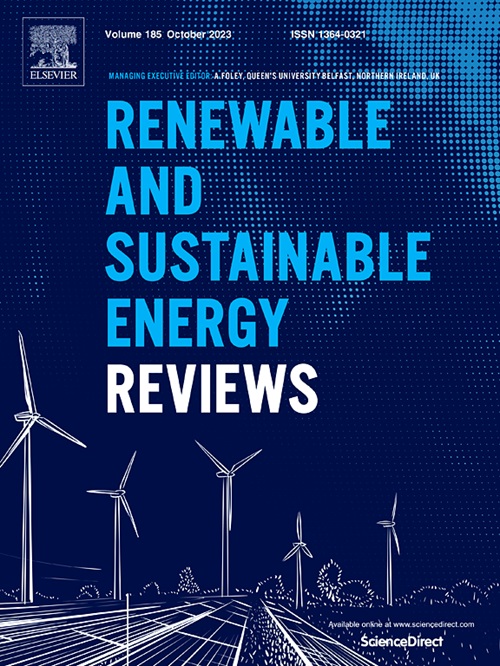Economic and environmentally efficient biochar production via microwave-assisted co-torrefaction of fruit residue and waste oil
IF 16.3
1区 工程技术
Q1 ENERGY & FUELS
引用次数: 0
Abstract
Addressing climate change and reducing greenhouse gas (GHG) emissions are critical global challenges. This study introduces a novel, cost-effective method to produce high-energy biochar with minimal GHG emissions through a microwave-assisted (MWA) co-torrefaction process. This groundbreaking process not only produces decarbonized solid fuel but also simultaneously reduces waste by utilizing fruit residues and waste cooking oil (WCO). Through the application of the Taguchi experimental method, this research identified torrefaction temperature and the WCO blending ratio as key determinant of the biochar higher heating value (HHV). Notably, Dimocarpus longan waste (DLw) outperformed Citrus maxima branches (CMb) in co-torrefaction, achieving a maximum HHV of 25 MJ/kg, a superior energy yield of 85%, and a fixed carbon content of 28%. Both types of biochar showed increased thermal stability under optimal conditions, meeting the specifications of bituminous coal and offering a viable alternative for coal combustion. The biochar produced from both CMb and DLw demonstrated good energy return on investment (EROI) values of 4–5 and reduced CO2 emissions by 58%–69% compared to burning bituminous coal alone. Remarkably, the cost of implementing this innovative technology at a pilot scale was 76% lower than that traditional biowaste treatment methods. In conclusion, the pioneering MWA co-torrefaction technology presented in this study offers an environmentally friendly, economically advantageous, and highly practical solution for converting biowaste into renewable fuel, aligning with the Sustainable Development Goals (SDGs), particularly Goal 7: Affordable and Clean Energy, and Goal 13: Climate Action.
通过微波辅助果渣和废油联合热解生产经济环保的生物炭
应对气候变化和减少温室气体(GHG)排放是至关重要的全球性挑战。本研究介绍了一种新颖、经济高效的方法,即通过微波辅助(MWA)共焦化工艺生产高能生物炭,同时将温室气体排放降至最低。这一突破性工艺不仅能生产脱碳固体燃料,还能利用水果残渣和废弃食用油(WCO)同时减少废物。通过应用田口试验法,本研究确定了热解温度和 WCO 混合比例是决定生物炭较高热值(HHV)的关键因素。值得注意的是,龙眼废料(DLw)的共热解性能优于柑橘树枝(CMb),其最高热值为 25 兆焦耳/千克,能量产出率高达 85%,固定碳含量为 28%。在最佳条件下,这两种生物炭的热稳定性都有所提高,符合烟煤的规格要求,为煤炭燃烧提供了一种可行的替代品。由 CMb 和 DLw 制成的生物炭显示出良好的能源投资回报率(EROI),与单独燃烧烟煤相比,能源投资回报率为 4-5,二氧化碳排放量减少了 58%-69%。值得注意的是,在试点规模上实施这项创新技术的成本比传统的生物垃圾处理方法低 76%。总之,本研究中提出的开创性 MWA 联合热解技术为将生物垃圾转化为可再生燃料提供了一种环保、经济、实用的解决方案,符合可持续发展目标(SDGs),尤其是目标 7:负担得起的清洁能源和目标 13:气候行动。
本文章由计算机程序翻译,如有差异,请以英文原文为准。
求助全文
约1分钟内获得全文
求助全文
来源期刊

Renewable and Sustainable Energy Reviews
工程技术-能源与燃料
CiteScore
31.20
自引率
5.70%
发文量
1055
审稿时长
62 days
期刊介绍:
The mission of Renewable and Sustainable Energy Reviews is to disseminate the most compelling and pertinent critical insights in renewable and sustainable energy, fostering collaboration among the research community, private sector, and policy and decision makers. The journal aims to exchange challenges, solutions, innovative concepts, and technologies, contributing to sustainable development, the transition to a low-carbon future, and the attainment of emissions targets outlined by the United Nations Framework Convention on Climate Change.
Renewable and Sustainable Energy Reviews publishes a diverse range of content, including review papers, original research, case studies, and analyses of new technologies, all featuring a substantial review component such as critique, comparison, or analysis. Introducing a distinctive paper type, Expert Insights, the journal presents commissioned mini-reviews authored by field leaders, addressing topics of significant interest. Case studies undergo consideration only if they showcase the work's applicability to other regions or contribute valuable insights to the broader field of renewable and sustainable energy. Notably, a bibliographic or literature review lacking critical analysis is deemed unsuitable for publication.
 求助内容:
求助内容: 应助结果提醒方式:
应助结果提醒方式:


